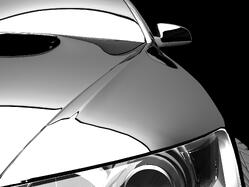Plating protects metal surfaces, increasing their hardness, tensile strength and applies an aesthetic quality. When seeking appropriate plating for a specific project, you’ll find that there are a number of nickel plating types and options to consider.
So how does one determine exactly which plating is best for your particular situation? The first item to consider is the application.
Generally speaking, if a conductive surface doesn’t require a high corrosion or wear resistance but needs a bright sheen or low-stress layer, then electrolytic plating will be the most efficient process.
Below you’ll find a listing of plating possibilities and how various industry applications might use them:
Electroless Applications
- Caustic and Hazardous Environments
- Oil and Gas Industry (Wear and Corrosion Resistance)
- Nuclear Industry (Thicker and complete coverage)
- Chemical Production Equipment (Wear and Corrosion Resistance)
- Aerospace and Defense (Uniformity of coating, Wear and Corrosion Resistance
- Food and Beverage (Wear and Corrosion Resistance, Cleanliness, Low Abrasive Surfaces
- Non-Conductive Material
- Ceramics and Glass Industr
- Plastics Industry
Electrolytic Plating Applications
- Automotive finishes
- High Polish Decorative Surfaces
- Functional Coatings (Hardened Chrome)
- Aerospace and Defense Industries (Low-stress applications, Heat Resistance, Absorbs Light and Heat)
- Household and Consumer Goods (Decorative Coatings)
- Kitchen Appliances
- Lighting Fixtures
- Silverware
- Jewelry (Decorative Coatings)
Electroless plated surfaces are less porous and provide a better barrier for corrosion when protecting materials such as A2 steel. Since the deposition is by precipitant, it covers the part evenly with minimal residual stress. The electrolytic plating process forces a one to one replacement of ions of differing sizes, creating inherent stresses within the finish.
With electroless plating, there is more flexibility to the thickness and volume of the plating. It is not limited by the availability of reduced surface metal ions so it can fill large voids or pits. It also has the capability to apply numerous plating finishes to a vast array of materials. These include metals and even plastics (with proper pretreating).
The above should give you a basic sense of the plating you should consider, however digging deeper you’ll find you may need to choose a more specific base type of electroless or electrolytic plating finish for your job.
Below are some of the base types that are commonly available.
Corrosion Protective Finishes
- Low Phosphorous Electroless Nickel (EN): Containing only 5% phosphor, this is a high-temperature finish that, due to its compressive stress, creates a harder surface less prone to fatigue failure. The low phosphor count also exhibits better Solderability and increased conductivity. However, it should only be used in neutral or alkaline environments as it is susceptible to acid corrosion.
- Mid Phosphorous Electroless Nickel: This finish contains 5-9% phosphor and is a great all-around option. It is the most economical of solutions, and especially useful when bringing a part back into tolerance. The finish is moderately corrosion and wear resistant and is typically of a brighter nature. However, thick layers deposited on steel will result in tensile stress.
- High Phosphorous Electroless Nickel: With between 10-13% phosphor, these surfaces form the best of quality for highly corrosive environments (being amorphous, glasslike, instead of crystalline). This is a non-magnetic surface, making it ideal for shielding electronics that are susceptible to local interference.
Electrolytic Finishes
When a more decorative surface is required, electrolytic finishes can be considered. It provides an aesthetically pleasing finish, covering surface imperfections. Electrolytic nickel deposits create little or no stress and as such, it is ideal for aerospace applications.
- Bright Plating: When a mirror finish is required, bright plating is often chosen. These are used in the chemical, petroleum and food and beverage industries. They maintain purity and prevent contamination and corrosion. These finishes are also used as intermediary processes as they have excellent chrome receptivity and ductility. They are also suited for high-quality plating on challenging metal-based substrates.
- Sulfamate Nickel Plating: Sulfamate plating is ideal when a low level of thickness is required. It is a satin or semi-bright finish.
Nickel is a critical component in a number of specifications for various industries to help with corrosion and wear resistance, diffusion and migration barriers, solderability, ductility and brightness.
Electro-Spec has the knowledge and expertise to engineer the most appropriate specification for your application. To learn more about nickel plating and other services we offer, download our eBook A Complete Guide to Electro-Spec.
Or, feel free to contact us today to learn more.







